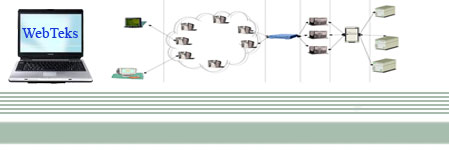ASP.NET allows you to cache pages. The means that when the code behind the page runs, it produces HTML, the HTML is sent down to the client, however a copy is stored in the memory of the web server. If the same page is requested again, then the page is retrieved from the cache and the code is not rerun. You have virtually infinite flexibility on controlling when the cache gets flushed.
The most basic caching is implemented by placing this line at the top of your ASPX page:
<%@ OutputCache Duration="3600" VaryByParam="none"%>
What this tells the ASP.NET caching code is to cache the page for one hour.
The full spec for the @OutputCache lines is:
<%@ OutputCache Duration="#ofseconds" Location="Any � Client � Downstream � Server � None" VaryByControl="controlname" VaryByCustom="browser � customstring" VaryByHeader="headers" VaryByParam="parametername" %>
Duration is a count in seconds to cache.
Location allows the caching to occur on the server, on the client, on a proxy server in between. The default is Any. If you always want server caching (which seems to me to be the most useful choice), change the line to read:
<%@ OutputCache Duration="3600" Location="Server" VaryByParam="none"%>
VaryByControl is only used by user controls, not on standard web pages. See the .NET documentation for more details.
VaryByCustom="browser" keeps a different copy of the output for each browser name and major version information. So if you have cloaking by browser version going on (which is easy to implement in .NET), then each separate page will get delivered.
VaryByCustom="customstring" Allows you to specify a string that will be passed to your code. To make this useful, you must then override the GetVaryByCustomString method in the Global.asax file. For example, place this line in your ASPX file:
<%@ OutputCache Duration="3600" Location="Server" VaryByCustom="Referer" VaryByParam="none"%>
Then in your Global.asax file add the following code:
public override String GetVaryByCustomString(System.Web.HttpContext hcContext, String strCustom)
{
switch (strCustom)
{
case "Referer":
Uri uriReferrer = hcContext.Request.UrlReferrer;
String strRet;
if (uriReferrer != null)
strRet = uriReferrer.Host;
else
strRet = null;
return strRet;
default:
return base.GetVaryByCustomString(hcContext, strCustom);
}
}
VaryByHeader allows you to cache based off of some field in the HTTP header sent by the client. The classic example is based off the Accept-Language header line.
VaryByParam allows you to cache different versions based off of querystring or post field parameters. So http://www.domain.com/foo.aspx?bar=baz would be cached separately from http://www.domain.com/foo.aspx?bar=bletch
There are also ways of controlling the caching through code.Labels: ASP.Net, Caching, Web Forms |


















